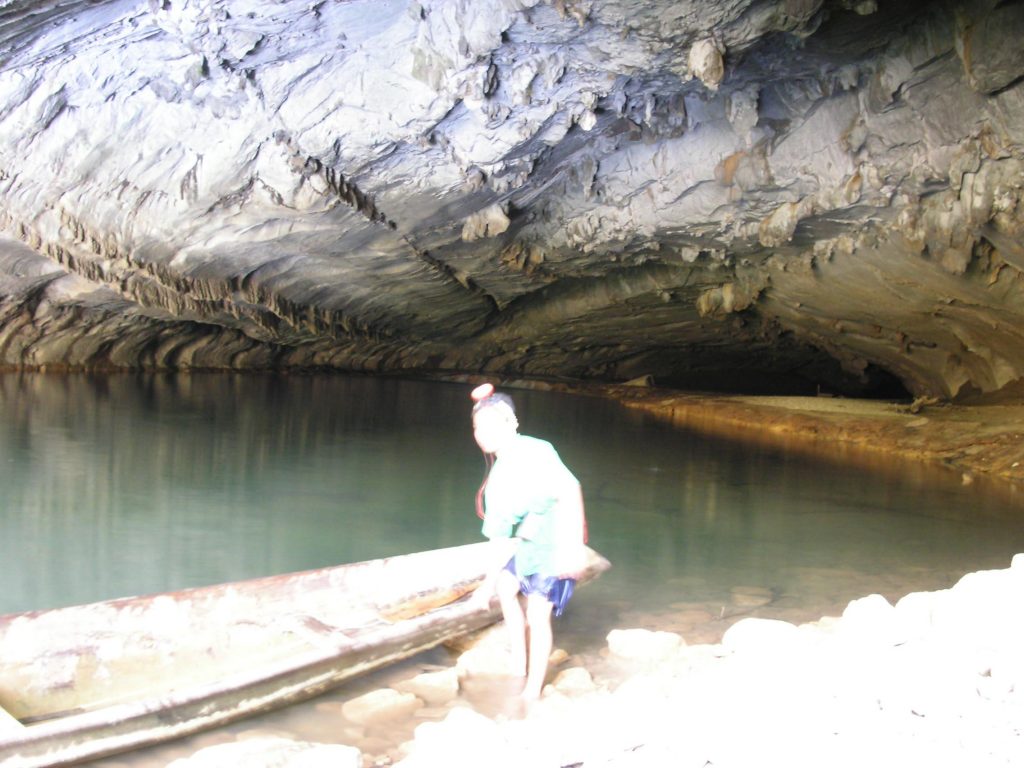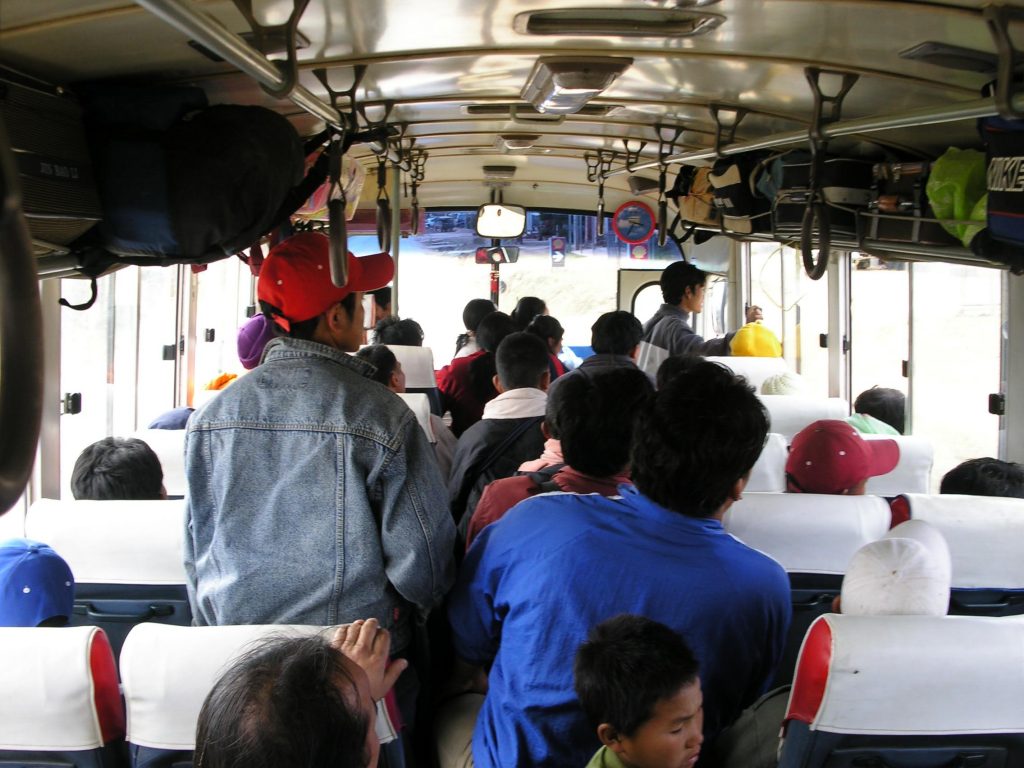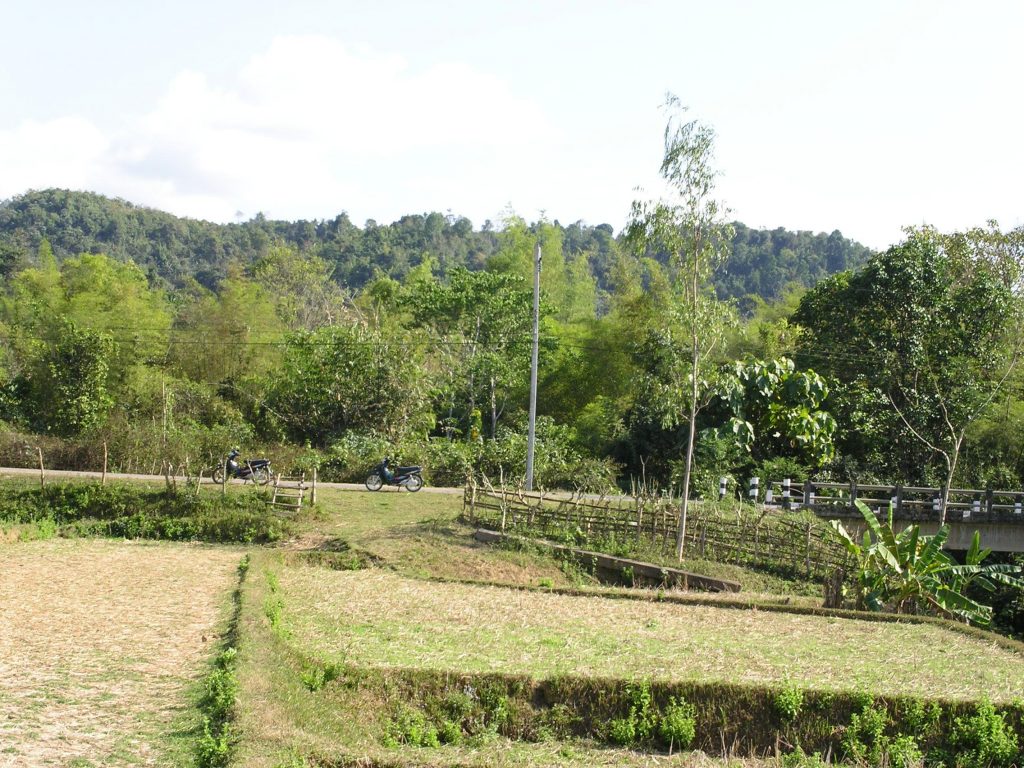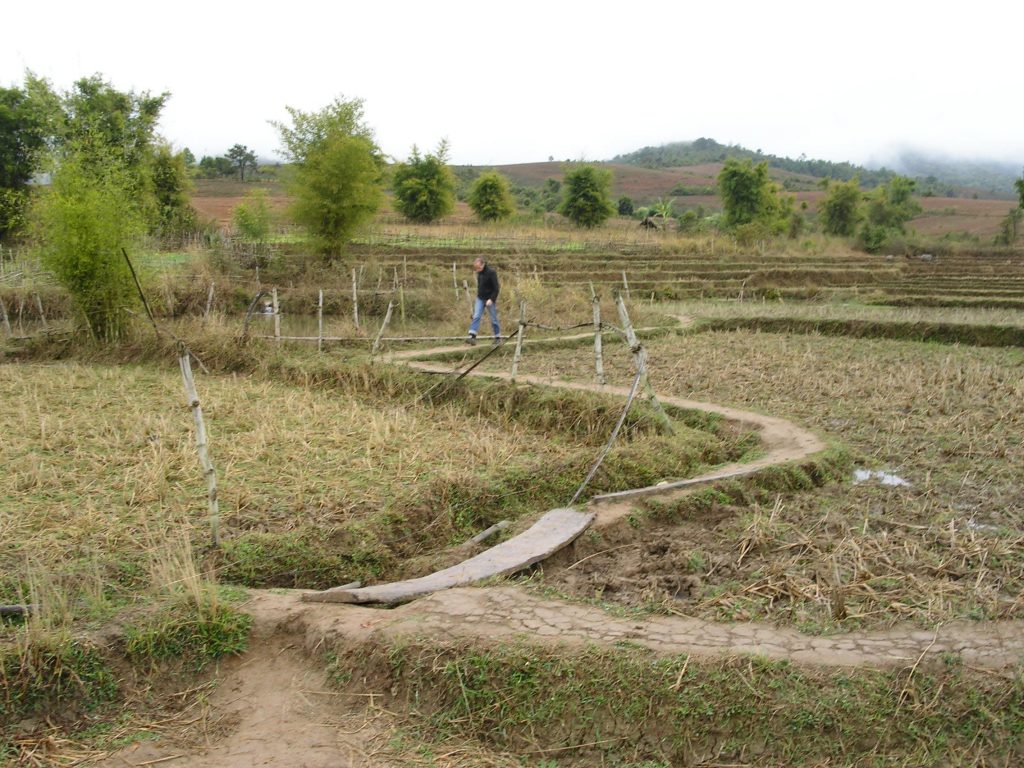The trip to the Kong Lo caves had been hard on my kit, I’d lost my torch, my Teva sandals had the stitching fail at a critical point and the zip had failed on a set of shorts. On my last evening in Savannakhet I managed to restitch the sandals, though only with doubled up cotton thread as that is all I had. In addition the only way to find the holes on the plastic part of the sandle was every two stitches to unthread the needle, push the needle though the hole in the plastic, the webbing and neoprene backwards and then rethread the needle.
There were no major dramas on the bus the next day down to Pakse except for some reason the bus stations in Lao towns are miles from the town centre. Its not a big problem, it just doesn’t seem to make sense. What also seems mad is that in the town of origin the bus will stop regularly to pick up passengers on long distance routes making the first few miles maddeningly slow.
Pakse had a little more to offer than Savannakhet, but not a huge amount. I found a good deal on a nice room with a balcony so could lie down in the sun and plan my crossing into Cambodia. The Lao guide I had had few details and I hadn’t managed to get hold of a Cambodia guide in the towns south of Luang Prabang. I had decided to ask any travellers in town if they had come up that way and if they had a guide to sell. Success with the first person I asked though it did turn out to be one of the dodgy pirated Lonely Planets that are common around here (at different points it claims to be both the 4th & 5th editions).

Whilst on the subject of Lonely Planet’s its worth a comment on Lao’s. Its a useful book that I’d rather not have been without, however it has a feeling or being more out of date than other LP’s I have used despite being published fairly recently in 2002. Possibly Laos is changing faster in places than other countries .
The traveller hang out in Pakse is an Indian restaurant and I was well up for curry. Unfortunately this was the first disappointing curry I had in Laos, the pakora being all batter and no vegetable and some of the chicken in the curry being very overcooked and tough. It was strange that it had become the traveller hang-out when there was a far better Vietnamese place across the road.
I stayed here for two nights and on the second night sat chatting with a Scottish girl I had originally met on the boat down to Luang Prabang and a Canadian guy. Around 11ish we realised everywhere was closing up and the people at the place we were sitting were watching us expectantly. We paid up and headed home only for me to find my hotel locked up! I banged on the gate and shouted sabadee but no one responded. There was a shop and restaurant attached so I tried their doors, also locked. Things were looking bad until I noticed an unmarked door round the corner. I tried the handle and the door opened. With relief I headed inside and found myself in a small room behind reception. I made no mention of the problem the next day as the manager had been very helpful in getting the zip in my shorts replaced.
I had decided to stay on Don Khong, the largest of the Si Phan Don islands in the Mekong river. The transport there was another converted pickup, this one even more crowded than usual with a wooden bench down the middle in addition to the two rows down the sides. It meant for the bulk of the journey until the river ferry we had to sit without being able to move our feet or legs. Once at the ferry myself and a couple of Irish lads, Mannix & Kieron, hung on to the platform at the back. The bus did a big loop round the whole of the island before arriving in the biggest village Muang Khong. There we sorted out the best accommodation deal yet $3 a night for wonderful little bungalow rooms. An OK dinner was had in the attached restaurant on the river before the numbers of insects drove us back. We bought a bottle of the local Lao Lao (rice whisky) and some mixers and headed back to the porch in front of one of our bungalows to chat and listen to music. When the first bottle was finished we bought a second…… Next day was a write off.
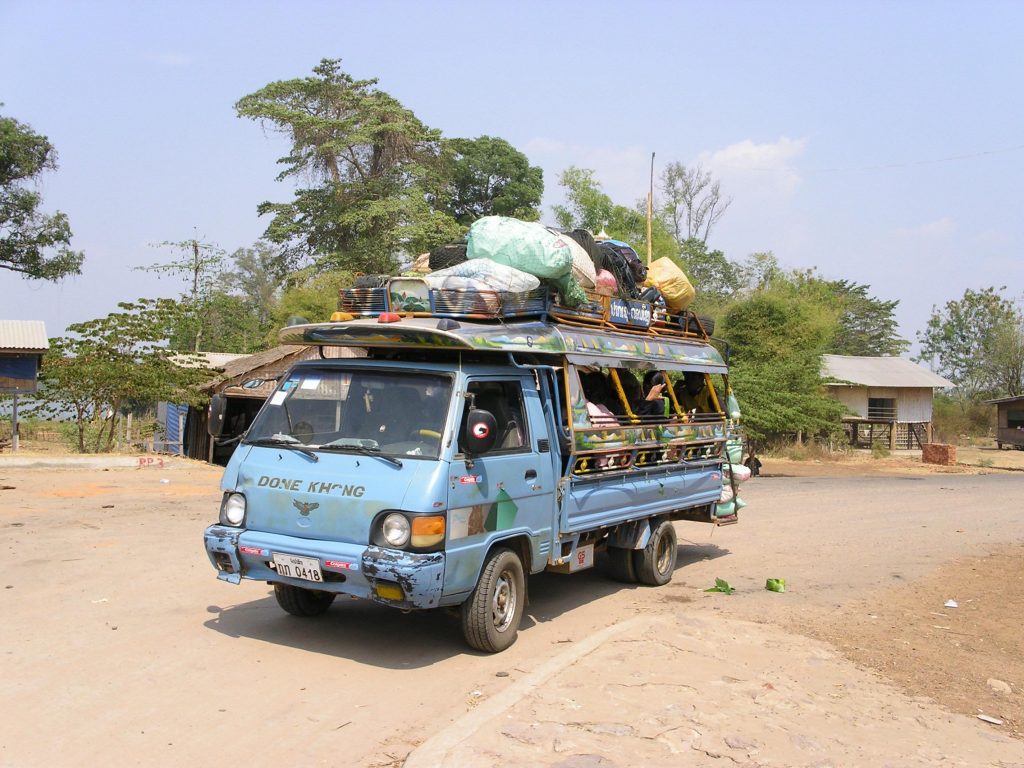

The Sunday was to be my last full day in Laos and I decided to rent a motorbike to explore the waterfalls and other islands. Having crossed the ferry and headed down a side road I noticed that my back tyre was flat. I had it fixed nearby (it had an inner tube) but also noticed that at one point the rear tyre was down to the canvas. I took the bike back over the ferry and insisted on getting my money back. I found another bike somewhere else and the tyres looked good so I headed off again back over the ferry. First stop was the Khon Phapheng Falls where the eastern part of the Mekong drops 15m. That may not seem like much but the Mekong is a big river, you can get close to them and there isn’t the commercialism that surrounds Niagara.

Next stop was to go and see the Cambodian border at Voen Kham as I planned to cross tomorrow and wanted to do a little recon. 4km from the town was a barrier across the road next to building market Lao Customs. I came to a halt and the bike stalled and wouldn’t restart. The guys from the buildings came out and pulled the bike up next to theirs. After failing to start it a couple of them took out and cleaned the spark plug. Eventually the bike restarted but I had a hard time believing teh plug was the problem. I thanked them for their help and was waved though the barrier onto the dirt road to the town. At the entrance to the village was another barrier marked Lao Immigration that I was not going to cross so I turned round and headed back. My plan was then to leave the bike and head on the ferry to Don Det and Don Khon, but there did not seem to be a secure place to leave it and my passport was held until the bike’s safe return. I headed back to Don Khong but on the road back to the ferry the bike cut out and wouldn’t restart. After leaving it to cool for a while I tried again without success. I had no option but to push it the 7km back to the rental place. Various people tried to help or fix the bike but to no avail.
Whilst I waited for the ferry to depart a diesel plow puller (their 2 wheeled equivalent of a tractor) pulling a trailer lost control down the hill and came speeding at the ferry. I prepared to jump ship if it came my way but it headed down the opposite side finally jamming between the railing and a pick-up. After dropping off the bike I headed back to the bungalow for a shower and a beer.
Staying in the bungalow opposite myself were a Seattle couple, Richard and Nancy. They were also planning to cross into Cambodia and had done a little more research than myself so we planned to team up. At 8am next day we caught a boat across the river and then a converted pick-up down to Voen Kham. The plan was to catch the midday slow boat into Cambodia down to Stung Treng and thereby avoiding the speedboat mafia so we had planty of time to take a boat trip to see the freshwater Irrawaddy dolphins which are now endangered in the Mekong. We did get to spot a small pod several times (photo to follow) and headed back to the border.

Coming up to midday it was clear that there were no other passengers waiting for the midday boat and therefore little surprise when by 12:30 nothing had shown up. We had to deal with our first Cambodians, the speedboat mafia.



